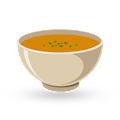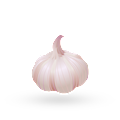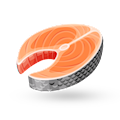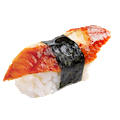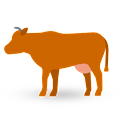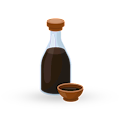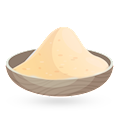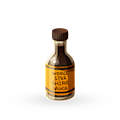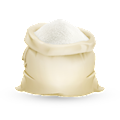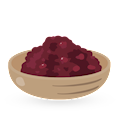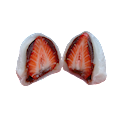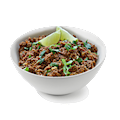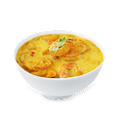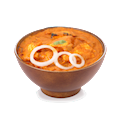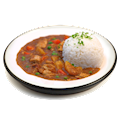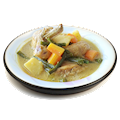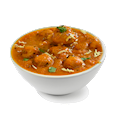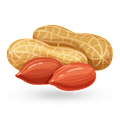Yokohama-style ramen or iekei ramen is a Japanese type of ramen originating from the Yokohama area and dating back to 1974. The dish consists of thick noodles and a stock that's a mix of creamy tonkotsu (pork broth) and soy sauce. The toppings include chashu pork, chopped seaweed, leeks, and spinach.
There are also optional toppings and condiments such as minced garlic, sesame, preserved vegetables, and black pepper. The name of the dish means home-style ramen, and it was created by a former truck driver called Mr. Yoshimura, who'd opened his own ramen shop in 1974.
OTHER VARIATIONS OF Ramen
Nigiri or nigirizushi is a special kind of hand-pressed sushi where the meat is sliced and pressed on top of sushi rice. It was developed in Tokyo (then called Edo) during the 1800s. Sometimes, nori seaweed is used to wrap the whole concoction and keep it together.
The topping is usually seafood such as shrimp, tuna, haddock, or eel, and it should always be fresh and of the highest quality. Traditionally, nigirizushi is paired with shiso leaves, wasabi, soy sauce, or pickled ginger. It is sometimes garnished with daikon and salted seaweed.
OTHER VARIATIONS OF Sushi
MOST ICONIC Nigiri
View moreGyūdon is one of the most popular and inexpensive fast food dishes in Japan. Its name can be literally translated to beef bowl. The dish consists of beef and onions served over a bowl of rice. Beef and onions are cooked in a combination of mirin, sugar, sake, and soy sauce, imparting a salty-sweet flavor to the dish.
In the restaurants, known as gyūdon-ya, there is often pickled red ginger and red chili at the table, so anyone can season their dish according to personal preferences. The restaurants are often frequented by numerous hungry students who eat on a budget, and some of those restaurants are open 24 hours a day.
OTHER VARIATIONS OF Donburi
MAIN INGREDIENTS
A specialty of the Japanese Kantō region known as monjayaki is pan-fried batter, a type of pancake consisting of wheat flour (komugiko) and fish broth (dashi). The pancake is mixed with cabbage, seasonings, and other ingredients, cooked until it is crispy on the bottom and partially cooked on the surface.
The dish first became popular after World War II, when food was scarce, and the combination of dashi and komugiko provided an inexpensive way for numerous families to eat. Originally, monjayaki is derived from funoyaki, a batter-only snack that was often served during Buddhist ceremonies.
MOST ICONIC Monjayaki
View moreMAIN INGREDIENTS
Taiyaki is a Japanese fish-shaped cake that is often consumed as a snack, made from flour and filled with azuki sweet bean paste. It is usually served warm and is often found at most taiyaki stands at any winter festival in Japan. Most people believe that this sweet treat originated in Tokyo during the Meiji era, but taiyaki became extremely popular in 1976 with the emergence of a beloved children's song called Oyoge!
Taiyaki-kun (Swim! Taiyaki). It is said that the best taiyaki is characterized by a crisp shell that has been baked to a golden brown color, and although there are many different flavors and varieties of taiyaki today, the basic taiyaki still remains a favorite.
OTHER VARIATIONS OF Wagashi
MOST ICONIC Taiyaki
View moreYokosuka navy curry is a variety of Japanese curry prepared with a combination of beef, chicken, potatoes, onions, and carrots. The ingredients are cooked in a pan and thickened with a roux consisting of curry powder and flour. The dish is always accompanied by rice, while traditional sides include a salad and a glass of milk.
This curry type is so popular that upon arrival at Yokosuka navy base, visitors are greeted by a statue of a seagull holding a big plate of this delicious curry.
OTHER VARIATIONS OF Curry
MAIN INGREDIENTS
The round, golden brown anpan is a popular Japanese pastry which consists of a wheat bun that is usually filled with sweetened red bean paste. Traditionally garnished with poppy or black sesame seeds, anpan is a delightful combination of the sweet filling, soft interior, and a crispy crust.
This incredibly popular snack was invented in 1875 by a former samurai, Mr. Kimura, who turned to baking and established the legendary Kimuraya bakery. His invention was an instant hit, and to this day anpan buns remain as one of the most famous Japanese pastries.
VARIATIONS OF Anpan
MAIN INGREDIENTS
Kaminari-okoshi, often called merely okoshi, is a popular Japanese confectionery, similar to rice crispy treats. The main ingredient in okoshi is expanded rice, created by roasting rice grains until they pop. A mix of sugar and butter or corn syrup is used to hold the rice together, and after the additional ingredients have been added, the mixture is formed or pressed in trays, left to dry, then cut into square shapes.
This crispy Japanese treat first appeared during the mid-Edo period in Japan and was primarily sold by street vendors in the vicinity of Buddhist temples in Asakusa, one of the districts in Tokyo. Originally, peanuts were added to enrich okoshi, but modern versions also include other nuts, dried fruit, chocolate, or sesame seeds, along with other exotic and interesting flavors such as matcha green tea or caramel.
Naporitan is a Japanese dish made with a combination of overcooked spaghetti, ketchup, onions, green bell peppers, mushrooms, and sausage, ham, or bacon. The ingredients are sautéed and then tossed with the pasta and ketchup. The dish was created shortly after WWII by Shigetada Irie, the head chef at the New Grand Hotel in Yokohama.
He was inspired by a similar dish of spaghetti and tomato sauce that the US soldiers were eating overseas, and it was named naporitan after Naples, Italy. This type of Japanese pasta dish is considered yoshoku - western cuisine with Japanese influences.
Hanetsuki is a traditional Japanese technique of preparing gyoza in a unique way. Also known as gyoza with wings, hanetsuki gyoza is prepared with dumplings that are filled with savory ingredients, then pan-fried until done. There should be a clump of gyoza in a pan, and they are all connected with a crisp, lacy, and flaky sheet of fried starch at the bottom, consisting of flour and water.
Once prepared, these gyozas look like they have wings, hence the name. This technique was first created in Tokyo by a Japanese owner of the Niihao restaurant, who was inspired by a dumpling dish from Dalian. Hanetsuki gyozas can be rectangular or circular – the rectangular ones are usually prepared in restaurants, while the circular ones are more commonly prepared at home.
TasteAtlas food rankings are based on the ratings of the TasteAtlas audience, with a series of mechanisms that recognize real users and that ignore bot, nationalist or local patriotic ratings, and give additional value to the ratings of users that the system recognizes as knowledgeable. For the “Top 16 Kanto Foods” list until May 18, 2024, 1,502 ratings were recorded, of which 1,329 were recognized by the system as legitimate. TasteAtlas Rankings should not be seen as the final global conclusion about food. Their purpose is to promote excellent local foods, instill pride in traditional dishes, and arouse curiosity about dishes you haven’t tried.





